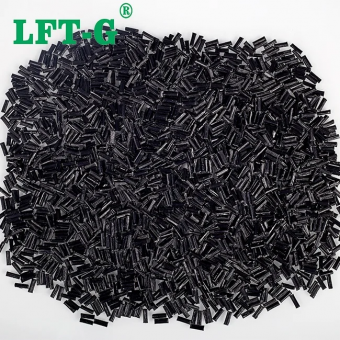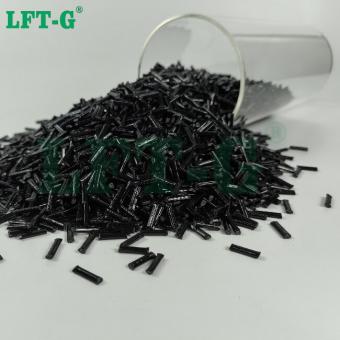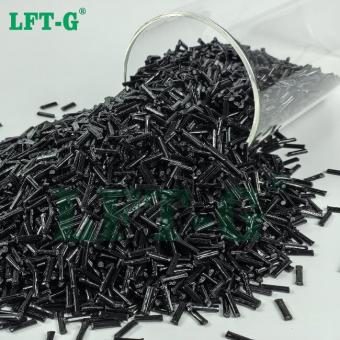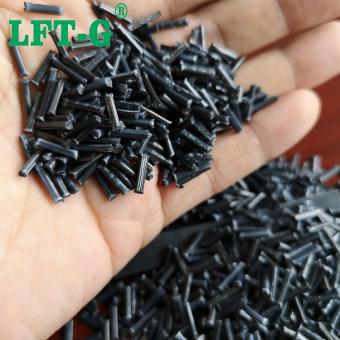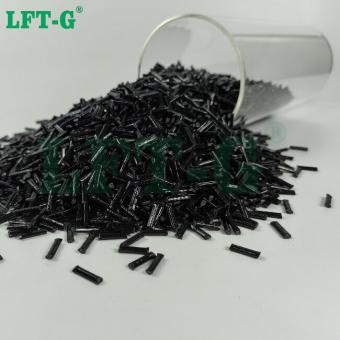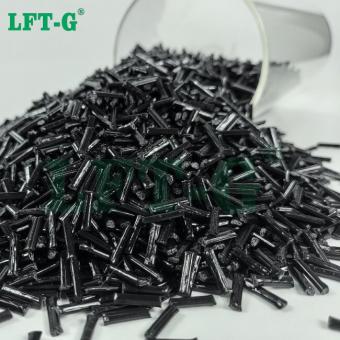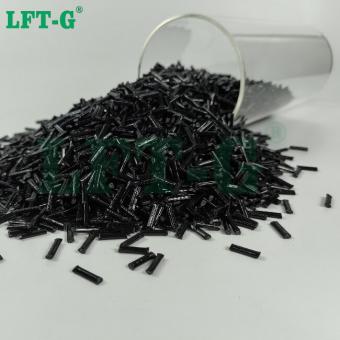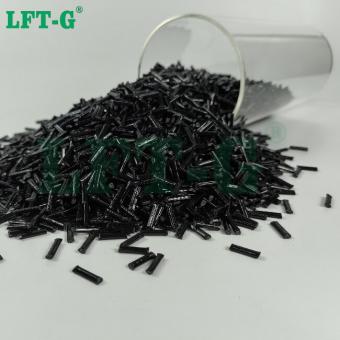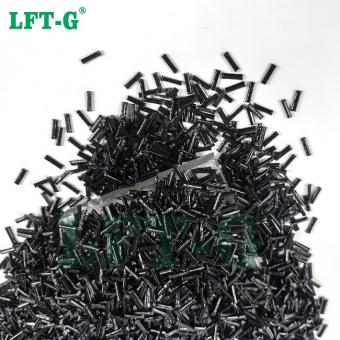PLA Long carbon fiber Reinforced polylactic acid repared by solution impregnation process.Long carbon fiber Reinforced polylactic acid PLA is a degradable material
-
PLA filling Long carbon fiber Reinforced polylactic acidPLA materials are current pioneering materials in biodegradable materials. Long carbon fiber Reinforced polylactic acid PLA modified materials are likely to become global advantages in future green materials.
- PLA composite green materials
- PLA long carbon fiber high rigidity and strength
- Reinforced polyactic pla instead metal
- long carbon fiber with PLA modification
- Polyactic Degradable material
- injection moldig products
Tags :
-
PLA Pellets Carbon FiberLFR-PLA can be processed using conventional plastic processing techniques like injection molding and extrusion, offering good adaptability in manufacturing. It is widely used in industries like automotive, consumer electronics, 3D printing, and eco-friendly packaging due to its combination of high performance and sustainability.
- carbon fiber pla
- pla carbon fiber filament
- carbon fiber pla filament
- pla pellets
- carbon fiber automotive wheels
- pla fiber
Tags :
-
PLA Carbon FiberLFR-PLA can be processed using conventional plastic processing techniques like injection molding and extrusion, offering good adaptability in manufacturing. It is widely used in industries like automotive, consumer electronics, 3D printing, and eco-friendly packaging due to its combination of high performance and sustainability.view more
-
LFT PLA Manufacturer Carbon Fiber filled Compounds green materialsPLA is an opaque plastic suitable for making medical components as well as for prototyping applications. PLA is a high-strength but brittle plastic that cannot be used in applications that experience shock loads. The lactic acid building blocks of PLA can be made from fermented plant starch, like corn, under controlled conditions. It takes less energy to produce PLA than petroleum-based thermoplastics, making it relatively eco-friendly. PLA is often regarded as being biodegradable. What Are the Advantages of PLA? Some of the advantages of PLA plastic are listed below: Biocompatibility: PLA is non-toxic to humans. It can remain in contact with the skin for long periods without any negative effects. The decomposition products of PLA are also non-toxic: it degrades into harmless lactic acid. It is often used for stents and sutures that are designed to break down inside the body over several months. Low-Energy for Production: PLA takes less energy to produce compared to other petroleum-based plastics due to its relatively low melting point of 165 °C. The polymerization of PLA also consumes 25 to 55 % less energy than other conventional petroleum-based polymers. Mechanical Properties: PLA has good room temperature strength and stiffness, but is not suitable for sudden impact loads. Food Safe: PLA is non-toxic and is generally recognized as safe by the FDA (Food and Drug Administration). FAQ *What processes are LFT materials suitable for? LFT material is mainly suitable for injection molding, as well as partial extrusion. The requirements for injection molding machines are mainly reflected in the nozzle. *Why are your products so long? Why does the material I used before, filled with glass fiber, look different than this? Although long fiber modified materials (LFT) and short fiber modified materials (SFT) are through the combination of fiber and resin to produce higher properties of the complex. However, the two materials are different from the production process, internal structure, appearance, performance, application and so on. Production process: The fiber of SFT is chopped and mixed with resin, and the production process of LFT is melt impregnation. Internal structure: The fibers inside SFT particles are short and disordered, while the fibers inside LGF are neatly arranged and longer. Appearance: The length of SFT is usually less than 3 mm, and the length of LFT is 5-24mm. Performance: LFT impact performance than SFT increased 1-3 times, tensile strength increased by more than 50%, mechanical properties improved by 50-80%. Application: LFT is more suitable for use in products with high strength requirements, as load-bearing parts and structural parts. *What is your MOQ? MOQ is 25kg *Do you support custom service? Color: Please let us know which Pantone color you want to customize Length: Lengtjh between 5mm-24mm can be customized. If there are no special requirements, the length of the plastic particles is 10-12 mm. Our custom service is free, but the MOQ is 500kg. *Where is your factory? At present, our company headquarters and factory are in Xiamen, China. We also have several offices in other provinces in China, and an exclusive agent in Turkey.
- PLA recycled
- fiber filling polymer instead of metal steel
- Sample free natural plastic new CFRP
- PLA Carbon
- China manufacturer PLA
- pla resin customized service
Tags :
-
PLA Plastic Resin with Fiber Reinforced Thermoplastic CompoundsIt takes less energy to produce PLA than petroleum-based thermoplastics, making it relatively eco-friendly. PLA is often regarded as being biodegradable.
- pla plastic pellets
- green materials
- carbon fiber reinforced plastics
- thermoplastic polyurethane pellets
- pla plastic
- LFT granules
Tags :
-
Carbon Fiber Reinforced PLA Resin Pellets Injection MoldingLFR-PLA can be processed using conventional plastic processing techniques like injection molding and extrusion, offering good adaptability in manufacturing. It is widely used in industries like automotive, consumer electronics, 3D printing, and eco-friendly packaging due to its combination of high performance and sustainability.
- pla price per kg
- carbon fiber reinforced polypropylene
- lft g for automobile market
- applications of polymers in aerospace engineering
- thermoplastic cfrp
- carbon fiber composites
Tags :
-
PLA Composite Pellets with 20-60% Long Carbon Fiber ContentPLA long carbon fiber reinforced material combines the environmental benefits of biodegradable PLA with enhanced mechanical strength and stiffness. It offers a sustainable solution for applications requiring lightweight performance, making it suitable for prototyping, consumer goods, and lightweight structural parts.view more
-
LFT Polylactide Long Carbon Fiber Filled CompositesPLA long carbon fiber reinforced material offers lightweight strength, excellent stiffness, and biodegradability, making it ideal for sustainable structural applications. The integration of long carbon fibers significantly enhances its mechanical performance compared to pure PLA.view more
-
China Carbon Fiber PLA Modified CompoundsLong Fiber Reinforced PLA (LFR-PLA) is an engineering plastic that combines long glass fibers with polylactic acid (PLA) resin. PLA itself is an environmentally friendly thermoplastic, known for its biodegradability. However, it has limited mechanical properties, such as strength, toughness, and heat resistance.
- carbon reinforced PLA
- PLA green materials
- pla recycled materials
- PLA composites
- carbon fiber reinforced plastic
- china carbon fiber
Tags :
-
LFT PLA Manufacturer Carbon Fiber filled Compounds green materialsPLA long carbon fiber reinforced materials offer improved strength, stiffness, and dimensional stability compared to standard PLA, while maintaining its biodegradability. They are ideal for eco-friendly applications requiring lightweight and enhanced mechanical performance.
- automotive thermoplastic composites
- pla green materials
- carbon fiber pellets
- can pla be recycled?
Tags :
-
LFT PLA Manufacturer Carbon Fiber Compounds green materialsPLA (Polylactic Acid) is a semicrystalline thermoplastic polyester. It is derived from renewable sources and is therefore classified as a bioplastic.view more
-
LFT PLA Manufacturer Carbon Fiber filled Compounds green materialsPLA is an opaque plastic suitable for making medical components as well as for prototyping applications. PLA is a high-strength but brittle plastic that cannot be used in applications that experience shock loads. The lactic acid building blocks of PLA can be made from fermented plant starch, like corn, under controlled conditions. It takes less energy to produce PLA than petroleum-based thermoplastics, making it relatively eco-friendly. PLA is often regarded as being biodegradable. What Are the Advantages of PLA? Some of the advantages of PLA plastic are listed below: Biocompatibility: PLA is non-toxic to humans. It can remain in contact with the skin for long periods without any negative effects. The decomposition products of PLA are also non-toxic: it degrades into harmless lactic acid. It is often used for stents and sutures that are designed to break down inside the body over several months. Low-Energy for Production: PLA takes less energy to produce compared to other petroleum-based plastics due to its relatively low melting point of 165 °C. The polymerization of PLA also consumes 25 to 55 % less energy than other conventional petroleum-based polymers. Mechanical Properties: PLA has good room temperature strength and stiffness, but is not suitable for sudden impact loads. Food Safe: PLA is non-toxic and is generally recognized as safe by the FDA (Food and Drug Administration). FAQ *What processes are LFT materials suitable for? LFT material is mainly suitable for injection molding, as well as partial extrusion. The requirements for injection molding machines are mainly reflected in the nozzle. *Why are your products so long? Why does the material I used before, filled with glass fiber, look different than this? Although long fiber modified materials (LFT) and short fiber modified materials (SFT) are through the combination of fiber and resin to produce higher properties of the complex. However, the two materials are different from the production process, internal structure, appearance, performance, application and so on. Production process: The fiber of SFT is chopped and mixed with resin, and the production process of LFT is melt impregnation. Internal structure: The fibers inside SFT particles are short and disordered, while the fibers inside LGF are neatly arranged and longer. Appearance: The length of SFT is usually less than 3 mm, and the length of LFT is 5-24mm. Performance: LFT impact performance than SFT increased 1-3 times, tensile strength increased by more than 50%, mechanical properties improved by 50-80%. Application: LFT is more suitable for use in products with high strength requirements, as load-bearing parts and structural parts. *What is your MOQ? MOQ is 25kg *Do you support custom service? Color: Please let us know which Pantone color you want to customize Length: Lengtjh between 5mm-24mm can be customized. If there are no special requirements, the length of the plastic particles is 10-12 mm. Our custom service is free, but the MOQ is 500kg. *Where is your factory? At present, our company headquarters and factory are in Xiamen, China. We also have several offices in other provinces in China, and an exclusive agent in Turkey.view more

 e-mail
e-mail English
English français
français Deutsch
Deutsch русский
русский italiano
italiano español
español português
português العربية
العربية 日本語
日本語 한국의
한국의 中文
中文












